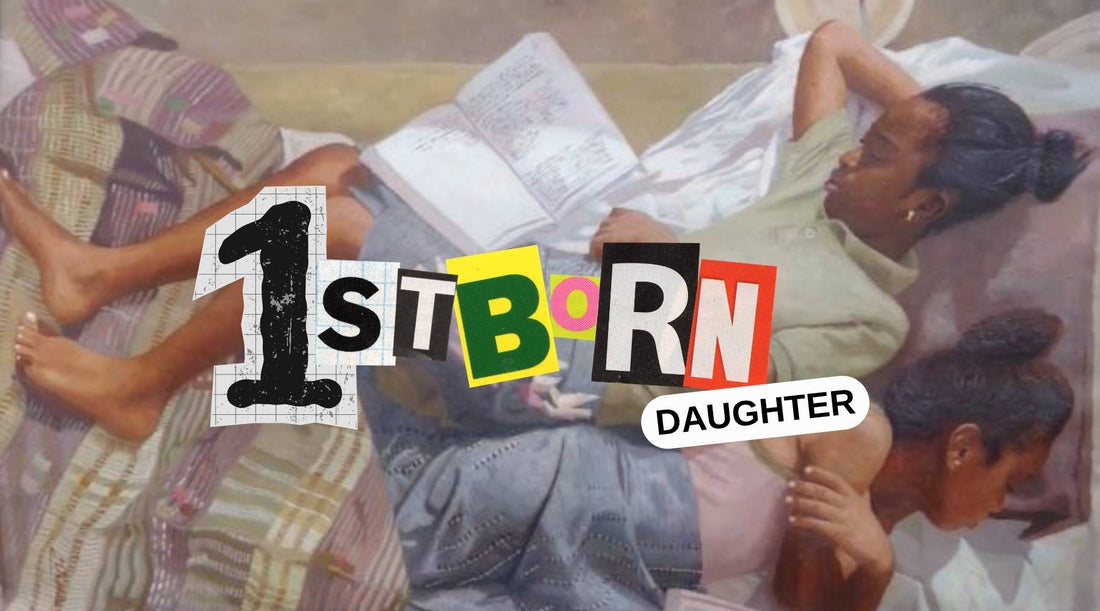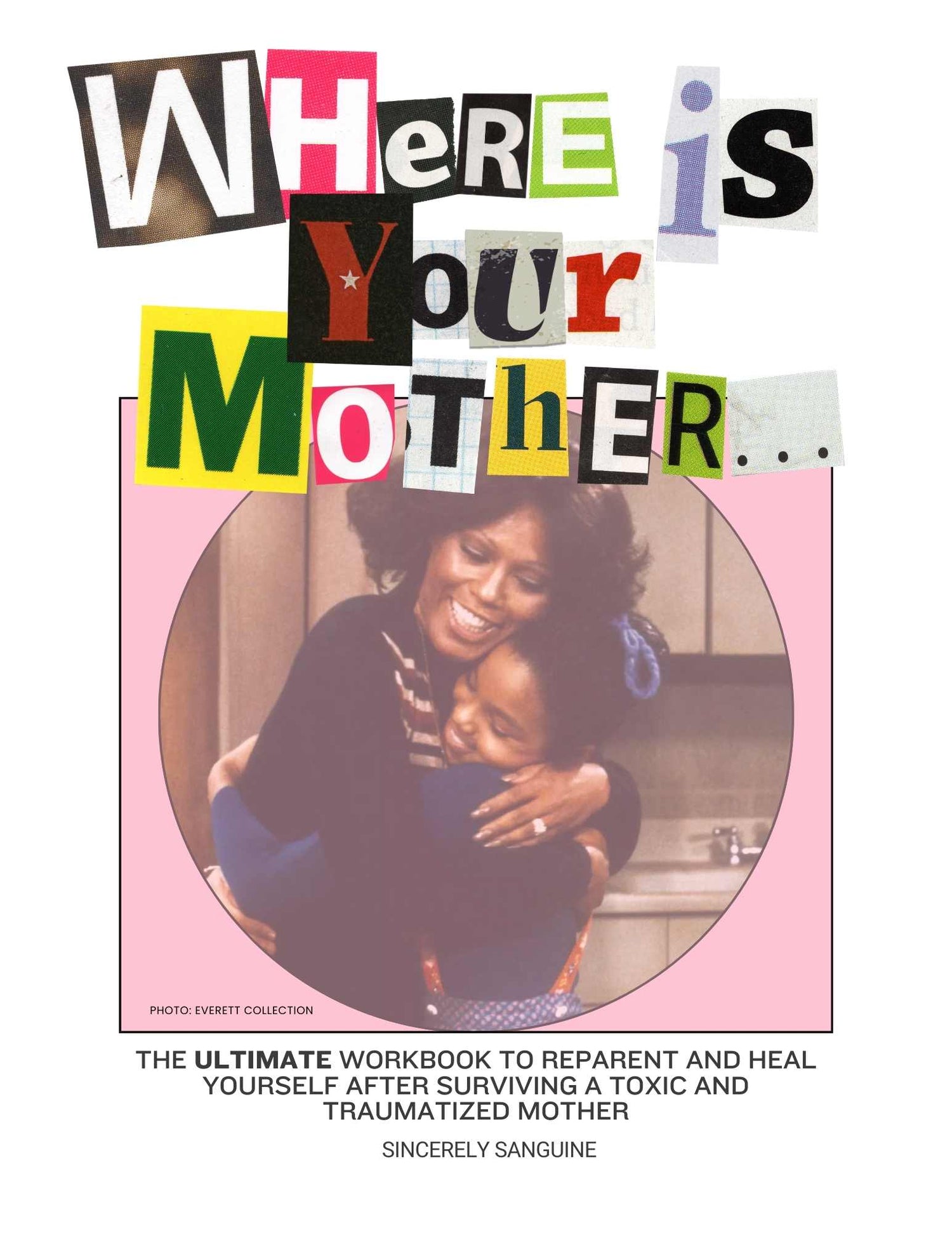
One Child Left Behind: Understanding The Eldest Daughter Syndrome
8 minute read
Partager avec un ami
"I am in no rush to have kids because I'm exhausted from helping you raise yours."
Just when life begins to look-up, you feel as though you finally have the opportunity to focus on yourself, here goes someone asking the dreaded questions "when are you going to settle down" and "when are you having kids?" Eldest daughters tap in! I don't know about you, but I'm exhausted! Emotionally, physically, and mentally burnt out, fried! Within this article we explore the eldest daughter syndrome and how one's birth order and biology impacts how the eldest daughter navigates relationships, friendships, and her everyday life. This article also employs information from the motherwound healing workbook, Where Is Your Mother, to assist the eldest daughter in her liberation towards no longer being "bound by biology" and birth order to truly live an authentically liberated life of her own.
The Struggles Of Dating As The Eldest Daughter
Dating as the eldest daughter appears difficult for many. Especially, when attempting to avoid the trap of marrying into the spousal caregiver role. Eldest daughters often unconsciously attract partners that employ weaponized incompetence, low effort, breadcrumb, and bare minimum behavior due to the hyperindependence and fix-it attitude of the eldest daughter. On the opposing end, trusting your partner to execute tasks and show up for you (in the same capacity that you have shown up for yourself) without micromanaging or feeling weak is also common in the eldest daughter syndrome. Eldest daughters often express that asking for help and relying on others feels impossible and frightening. Eldest daughters often present as emotionally detached and unavailable, but long for a relationship of their own and to find "their person."
Many eldest daughters identify with being a "late-bloomer." Often due to an inability to prioritize dating and unapologetically lean into their coming-of-age moment. Due to the expectations and demands placed upon them as the eldest daughter and emotional and/or physical disconnection from a caregiver. Instead, eldest daughters tend to lean more on attaining academic and employment success.
"I'm not Gay, I'm Just A Traumatized Eldest Daughter and It's Strict Around Here!"
Eldest daughters that have learned to employ privacy and restrict aspects of themselves at an early age, may avoid bringing their partners or dating prospects around their family. Topics such as dating, sex, sexual orientation and expressing interest in another person may have been shamed, ignored, or suppressed due to the lack of open communication between caregiver and child. Being told as a child "I am not one of your little friends", but also expected to share openly as an adult fosters conflicting emotions and attitudes within the eldest daughter.
After the third family holiday with "no man", it's not uncommon (while ignorant) for family members to being to inquire, "well, are you gay?" Yet, many eldest daughters desire to respond with, "i'm not gay. I'm just a traumatized eldest daughter and it's strict around here!" In her desire to avoid familial patterns and roles, the eldest daughter may also unconsciously avoid relationships entirely, again in spite of a deep longing for one.
Many eldest daughters are often set as "the standard" or model child for the rest of the siblings. Or in some instances, the eldest daughter received harsh, rigid, and almost brutal punishments to send a message to the younger children. These experiences are then carried into adulthood. Within the Mother-Daughter: Identity Formation Lifecycle there are four stages.
- Stage one: Daughter’s dependence on mom for nurturance and care (infancy/childhood)
- Stage two: Daughter's emerging independence and search for own identity (adolescence)
- Stage three: Mother and daughter both function as independent adults (adulthoods)
- Stage four: Reverse dependence, when the mom is frail and more dependent upon offspring
Unfortunately, many eldest daughters navigating eldest daughter syndrome struggle with their identity during adulthood because of the parentification that they experience during their first two stages. Thus, contorting their lifecycle and altering the timeline of the different stages. While their caregivers are transitioning to stage four, the eldest daughter may appear stuck between stage one and two.
How Does The Eldest Daughter Date Freely?
When combating the eldest daughter syndrome, especially when dating, one must learn to relinquish the need to control. Attempting to control the individual, relationship, or outcome is a recipe for disaster. Believing that you can change a person or transform them into the"perfect partner" is a form of manipulation and also fosters unhealthy dynamics. To date an idealized version of an individual, whether dating their perceived potential i.e. empty promises, or the version of them that you've created establishes unrealistic expectations and can result in resentment. The person may never become the individual that you've created in your mind. Take a deep breath!
This also applies to platonic relationships as well. Unfortunately, eldest daughters with eldest daughter syndrome may attract codependent relationships, in some cases, due to the conditioned extreme people-pleasing of the eldest daughter. To avoid codependent relationships habitually access each relationship and how they make you feel. With an emphasis on feeling, because with the eldest daughter syndrome, eldest daughters are trained to abandon their needs and feelings for the needs and feelings of others.
What to look out for when overcoming extreme people-pleasing and codependency with eldest daughter syndrome:
- Over extending yourself
- Experiencing a lack of reciprocity
- Extreme approval seeking
- Conflict avoidance
- Attempting to control or act on behalf of others
- Self-blame
- Doing things to make others happy, even if you don't want to
- Intense feelings of rejection, abandonment, and unfulfillment
What does relinquishing control look like for eldest daughters with the eldest daughter syndrome?
Let the individual show you what they have to offer. Do not interrogate, intimidate, or initiate (excessively). When conversing, listen intently and gently inquire. Lead with gentleness, but avoid being a people-pleaser. The article, Are Traumatized Women “Less Feminine?”, explores how chronic stress and trauma can foster an inability to naturally employ gentleness and vulnerability. Also, abandon the fear of leaving and "making people feel bad." Emotions are temporary and they may not always feel good. With eldest daughter syndrome, one may hold the responsibility to tend to the feelings and needs of others. Almost similar to the dynamic of a caregiver and child. Say it with me, "they are not my responsibility!"
Next, abandon perfectionism and set clear boundaries! What once was does not have to remain the standard. There's a new sheriff in town, and she comes with boundaries. Understand that your worth is not contingent on your ability to perform for others. That's the eldest daughter syndrome talking. Foster relationships on shared interest, compatibility, and how you feel around the individual. The sentiment of abandoning old habits to overcome eldest daughter syndrome can greatly impact how you navigate platonic, intimate, and familial relationships, especially with siblings.
Eldest Daughter Syndrome and Navigating Sibling Relationships
Resentment may exist amidst sibling relationships when navigating the eldest daughter syndrome, especially if competition was or is present. Eldest daughters are placed in a peculiar role as the child, but also the third parent. The eldest daughter is expected to remain a child to the caregivers, but also display adult-like responsibilities in relation to their younger siblings. Thus, unfortunately inhibiting the sibling relationship early on.
Many eldest daughters find that the same rigid expectations that were placed onto them dwindle with the descension of the birth order line-up and as parents begin to age. Eldest daughters may resent their parents and begin to exhibit late stage rebellion or emotional cut-off from the family entirely. Younger siblings may also begin to resent their older sister's for being "too serious." The third parent dynamic inadvertently repeats the ideology of "i'm not one of your little friends" mentioned previously. As children, younger siblings may not feel comfortable to share intimate or vulnerable information with the eldest child, due to the third parent role. This then transitions into adulthood and the eldest daughter and younger siblings do not have a healthy relationship due to the roles established within childhood.
Yet, there is hope. Redefining your relationship with your siblings is a start. Boundary setting looks like supporting your siblings without fixing. This also looks like not being as assessable. Also, understand that you are not a punching bag or a space where people can emotionally dump on you.
What They Don't Talk About Related To The Eldest Daughter Syndrome
After exploring my own experiences with eldest daughter syndrome, I realized one thing. Not only are eldest daughters expected to care for their siblings, but often they are tasked with caring for themselves as well. Think about it, you were you first child. Let's pause on that revelation. You were your first child. With this information, extend grace to yourself on your healing journey as you reparent your inner child. Understand that you did your best and it's okay to put yourself first in this season of your life. As the first born daughter, you have done more than enough. Give yourself permission to rest!
Resources For The Eldest Daughter Overcoming Eldest Daughter Syndrome
-
Start Here: 10 Things Every Free Woman Should Know From The Book 'What Looks Like Crazy On An Ordinary Day
- The article provides you with a foundation for establishing practical tools to living an authentic life of your own.
- Utilize the activities and prompts within the Motherwound Healing Workbook to explore how your childhood has informed your identity. The workbook also includes 11 tips towards healing and reparenting your inner child.
-
Identify and heal the five soul wounds: rejection, abandonment, humiliation, betrayal and injustice as discussed within the book “Heal Your Wounds & Find Your True Self: Finally, a Book That Explains Why It’s So Hard Being Yourself!”
-
- Video: Eldest Daughter Syndrome: Fleeing The Nest, Survivors Guilt & Boundaries
If you think you may have a medical emergency, call your doctor or 911 or local emergency number immediately. SS does not recommend or endorse any specific tests, physicians, products, procedures, opinions, or other information that may be mentioned on the Site. Reliance on any information provided by SS, SS employees, others appearing on the Site at the invitation of SS, or other visitors to the Site is solely at your own risk.
The Site and the Content are provided on an “as is” basis.

